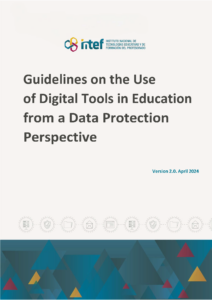The Spanish Ministry of Education, Vocational Training and Sports, through the Spanish National Institute of Educational Technologies and Teacher Training, published a document entitled ‘Guidelines on the Use of Digital Tools in Education from a Data Protection Perspective’.
The first part of the document has been translated into Spanish and it includes important information in the sections titled list structure, advisory, recommendations, analysis and references. The second part of the document includes a list of 627 digital tools selected and assessed on their compliance with European legislation on personal data protection primarily the General Data Protection Regulation or GDPR). This part has been kept in Spanish as it will be frequently updated due to foreseeable changes in the privacy policies of the listed tools.
It is important to read carefully the first part of the Guidelines document to understand how to use the tools, including the explanatory sections, warnings, and recommendations.
Aspersonal Data Protection is a field subject to continuous changes and updates, the ‘Guidelines on the Use of Digital Tools in Education from a Data Protection Perspective’ aims to be a living document.
The following points should be taken into consideration:
- This is an advisory document and it is not prescriptive.
- Various types of digital tools have been analyzed (open-source software, proprietary software, databanks, platforms, websites offering digital content and educational content, etc.). In all cases, these are either free tools or have a free or trial version available.
- The aim was to choose digital tools that are assumed to not be provided by an Educational Administration or the schools.
- An effort has been made to select a diverse range of digital tools that may be useful for teachers of any grade or subject area.

















